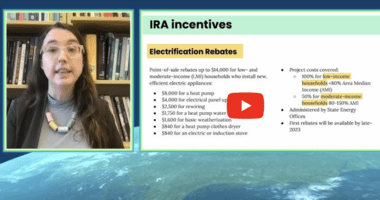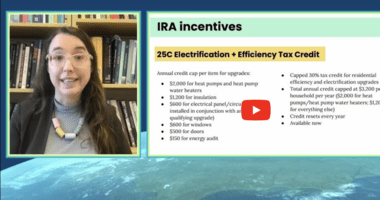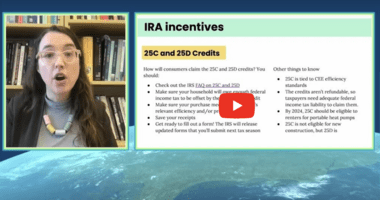
Cut Carbon Pollution and Save Money with a Heat Pump
If you're looking to replace or upgrade your home or business heating and cooling, there's no better way to go than with a heat pump.
HOW DO HEAT PUMPS WORK?
Unlike older boilers and furnaces, heat pumps don't actually create heat themselves (one reason they're so cost and energy efficient). Instead, heat pumps work by moving heat from inside to outside – or vice versa – to maintain the temperature you set. Think of them as conveyor belts for heat energy.
In practice, this means that when it's cold, heat pumps are effectively able to draw heat energy from the air outside and use it to blow warm air inside. When it's hot, the reverse happens, with heat pumps removing the heat from inside and blowing cold air. (Air conditioners are a form of heat pump.)
Learn More
Learn how choosing clean energy and electric alternatives to fossil fuels in our homes and vehicles can help you cut climate-changing carbon pollution in a big way from UC Santa Barbara Professor Leah Stokes, one of the authors of the Inflation Reduction Act.
Learn how you can use IRA tax credits and potential rebates to save money and switch to an energy-saving heat pump in your home.
Summary of IRA Tax Credits for Households
All the most popular IRA tax credits for households to help you bring clean energy home. All in one place.
See Your Potential Savings
Which incentives could you qualify for? Our friends at Rewiring America have a calculator to help you find out.
Next Steps
When you're ready to pick up the phone, HomeAdvisor and the Department of Energy's Energy Star both have good advice on finding a contractor to help you with your heat pump installation.
Further Reading
The Department of Energy has guides to IRA credits for homeowners and renters that cover incentives for heat pumps.
Our partners at BlocPower can help you understand the costs and variables of installing a heat pump in your home or business.
Rewiring America has a great fact sheet on IRA incentives for heat pumps.







